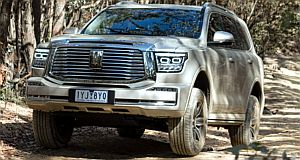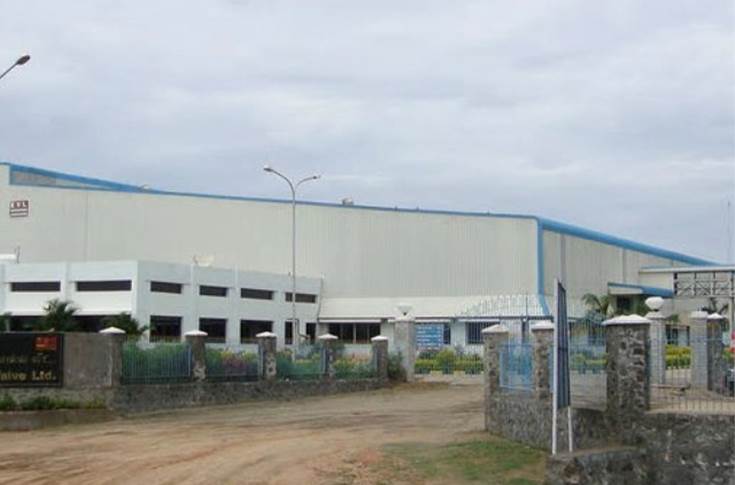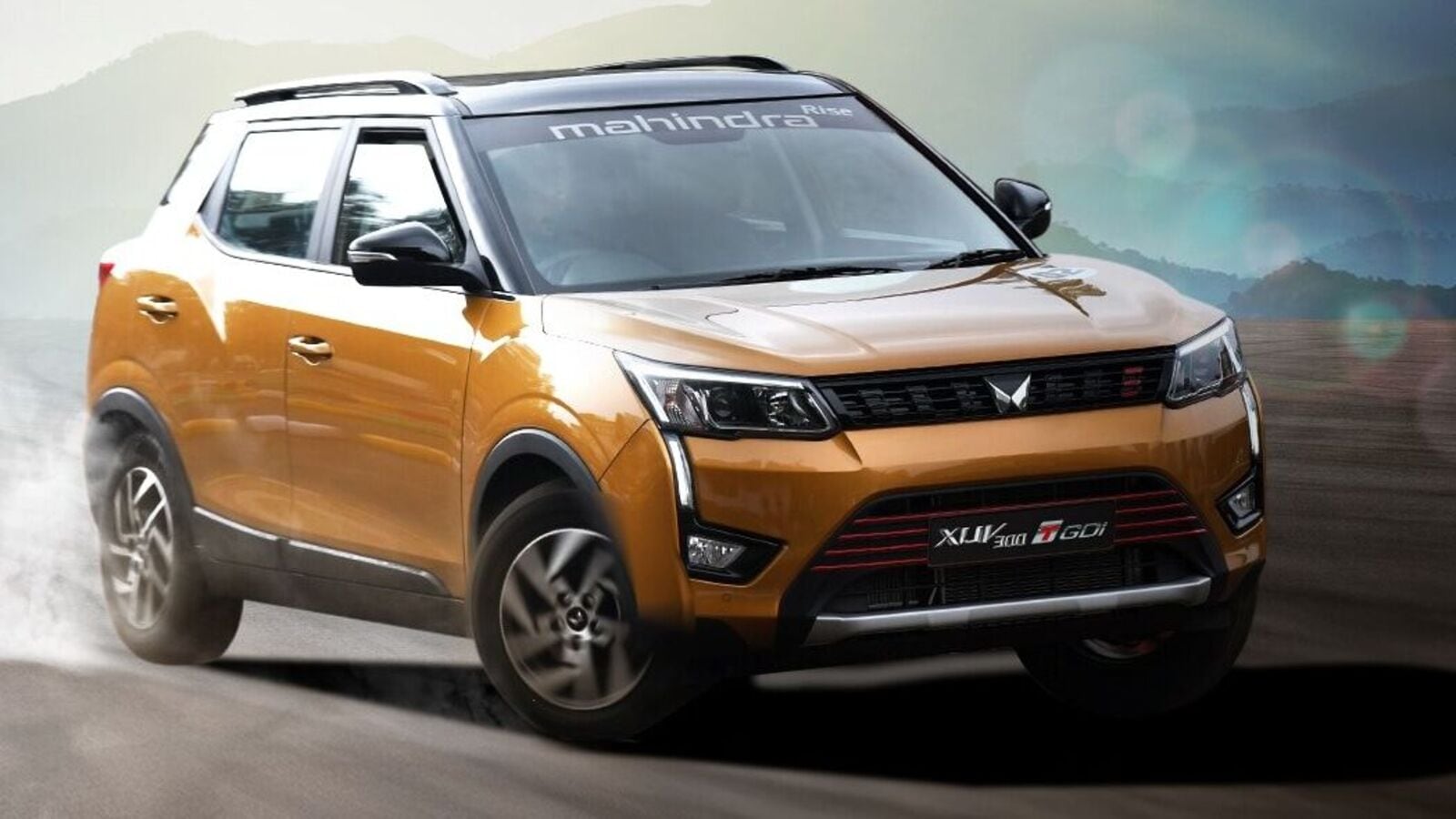Overview
THERE really isn’t a rival to the Toyota LandCruiser Prado – at least not one that can provide the same level of balance of on-road manners and off-road nouse.
Until now, at least…
And while the GWM Tank 500 must earn a lot of trust before it’s considered a bona fide bush-bashing equivalent to one of Toyota’s strongest-ever selling ‘fourbies’, the Chinese model’s arrival is one that Toyota and its ilk should indeed pay attention to – the segment is no longer a monopoly.
But before we get into the nitty gritty of what it’s like to pilot the Tank 500 across some of the gnarliest fire tracks and rock gardens Victoria has to offer, let’s take a minute to see what it is this $66,490 offering has to offer the adventurous Aussie family.
Available in Lux and Ultra grades – the latter from $73,990 – the seven-seat Tank 500 is dimensionally larger than its chief competitor, and up to $13,500 cheaper.
There is no diesel option, the range powered exclusively by a 2.0-litre four-cylinder turbo-petrol engine with hybrid assistance producing 255kW and 648Nm and driving all four wheels via a nine-speed automatic. GWM says the offering is good for 8.5 litres per 100km on the ADR Combined cycle.
By way of a quick comparison, those numbers are 105kW and 148Nm more than those produced by the 2.8-litre turbo-diesel LandCruiser Prado whose fuel economy yard stick is a competitive 7.9 litres per 100km.
The Tank 500’s two-speed transfer case is controlled by as many as 11 drive modes for traction over a wide array of surfaces. It offers the same braked towing capacity as the Prado, too, at 3000kg.
GWM’s claimed wading depth of 800mm is 100mm more than Toyota permits for the Prado. Off-road geometry is not far off that of the Prado at 30.0 degrees approach, 22.5 degrees ramp over, and 24.0 degrees departure. Bash plates and a rear diff lock are included as standard.
As standard, the Lux version of the GWM Tank 500 arrives with 18-inch alloy wheels, LED headlights, a sunroof, power seat adjustment (driver), heated front seats, leatherette upholstery, a 360-degree camera system with see-through chassis view, tri-zone climate control, and dual 14.6- and 12.3-inch infotainment and instrumentation displays.
Wireless Apple CarPlay and wired Android Auto connectivity is fitted as standard.
The Tank 500 will be offered in four paint colours – Crystal Black, Dune Gold, Marble White and Onyx Silver – with black upholstery on Lux grades. The high-spec Ultra will feature a dual-tone blue and cream option. Metallic paint is a $595 option.
On the safety front, the Tank 500 is fitted with auto parking assistance, seven airbags, front and rear cross-traffic alert, lane departure warning, lane keep assistance, lane centring control, emergency lane keep, forward collision assistance and AEB (with pedestrian and cyclist detection), traffic sign recognition, and adaptive cruise control.
GWM also offers a smartphone application on the Tank 500 which allows owners the ability to open and close the vehicle’s windows and sunroof remotely, and to check the status of and/or operate the vehicle’s locking system, climate control, heated and ventilation seats, lights, horn, and fuel level.
Owners will also be able to track the vehicle’s position via a built-in E-Fence mode.
Further, and in offering what GWM Australia says is a “strategy to support new, higher-priced models”, the Chinese brand will include its Care 777 package on the model, combining a seven-year/unlimited-kilometre warranty with seven years’ roadside assistance and seven-year capped-price servicing scheme.
Driving Impressions
Body-on-frame SUVs are plentiful Down Under, though with the majority being based on dual-cab underpinnings, the level of tech and equipment is often sorely lacking.
As you may have noticed above, that is not the case with the GWM Tank 500. There is plenty of technology and standard equipment – though not all of it is as useful or as user-friendly as it might be.
As we’ve reported with a number of Chinese-sourced vehicles in recent times, the calibration of various ADAS systems is at odds with Aussie driving conditions.
In the Tank 500, the lane keeping assistants and driver fatigue monitoring is particularly intrusive, the latter to the point that it is nearly constantly warning of a lack of attention – even when the driver’s focus is directly on the road ahead.
Combine this with a user-machine interface that is not as slick as some and you’ll appreciate our frustration. Sure, the systems can be switched off, but that kind of defeats the purpose. In our view, GWM (and others) need to take a serious look at how the competition operates and adjust their own systems accordingly.
Moving past that contentious issue and we’re pleased to say the Tank 500 is an otherwise solid offering. Sure, it might feel a little heavy, but that ruggedness provides impressive stability on- and off road, delivering a sense of confidence that is let down only by the Giti-sourced highway tyre’s lack of bite on unsealed surfaces.
We found the powertrain up to the task of hauling the Tank 500 along with relative ease and found fuel consumption over our course to be not dissimilar to diesel-powered competitors. It delivers accessible torque for off-road work, too, and with broad gearing is never left short when tackling steep grades or difficult obstacles.
If we were picky, we would want for a little more ‘punch’ when overtaking, the engine seemingly favouring city-speed performance than that of the open road.
GWM wasn’t holding back in throwing its Tank 500 at some serious terrain, though. The trails selected for the Australian media launch were what I would rate as moderate to difficult, the vehicle tackling all with little fuss thanks in part to its sensible clearance and geometry, and in part to its capable low-range gearing and front and rear differential locks.
There are also decent underbody bash plates, hill assist functions, and several driving modes to assist in off-road driving.
Ride quality is about where you’d expect a ladder-frame vehicle to land, though we would say the Tank 500 is slightly more supple than most. The double wishbone front and multi-link rear is well composed and hard to fault, the tuning slightly firmer than the Toyota LandCruiser Prado, but softer than the Ford Everest, to make one such comparison.
We did, however, find the wind rustle off the wing mirrors to disturb what was an otherwise quiet ride – the Tank 500 a naturally hushed vehicle with few mechanical or road noise interruptions.
The Tank 500 steers well enough but may be a little light on feel for some tastes. The electrically assisted rack does, however, make twirling the wheel a cinch in off-road terrain, the system backed by GWM’s Tank Turn function (as demonstrated earlier on the Tank 300) for even sharper situations off the beaten path.
It’s a pity the brake pedal of the Tank 500 is soft and poorly modulated, perhaps offering too much assistance too early for most situations. It’s an issue we’re certain GWM will amend, the ability of the company to take on feedback and deliver improvements one we’ve noted previously as outstanding.
Tie this with an enviable level of fit and finish throughout – including impressive panel fitment and paint finish – and the Tank 500 is a vehicle we think will raise more than a few eyebrows Down Under.
Then, add that to GWM’s unequalled aftersales and warranty support and there are few reasons not to give the Tank 500 a fair shake.
Fit a bull bar, a set of roof racks and a pair of sliders – and a set of decent tyres – and we reckon the GWM Tank 500 will go just about anywhere the LandCruiser Prado can. Let’s see who’s up for the challenge.



